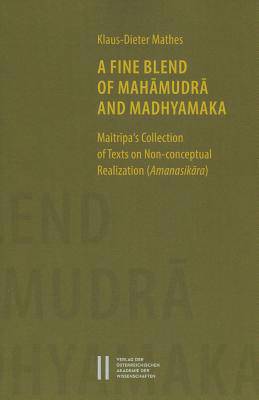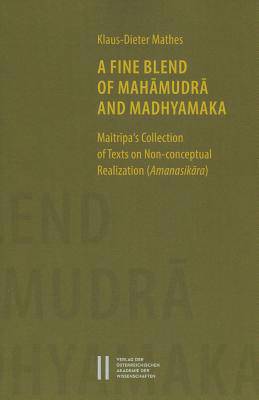
- Afhalen na 1 uur in een winkel met voorraad
- Gratis thuislevering in België vanaf € 30
- Ruim aanbod met 7 miljoen producten
- Afhalen na 1 uur in een winkel met voorraad
- Gratis thuislevering in België vanaf € 30
- Ruim aanbod met 7 miljoen producten
Zoeken
A Fine Blend of Mahamudra and Madhyamaka
Maitripa's Collection of Texts on Non-Conceptual Realization (Amanasikara)
Klaus-Dieter Mathes
Paperback | Engels
€ 127,45
+ 254 punten
Omschrijving
The collection of twenty-six texts on non-conceptual realization is the result of blending the essence and tantric mahamudra teachings of Saraha, Nagarjuna and Savaripa with a particular form of Madhyamaka philosophy, called 'non-abiding' (apratisthana), which aims at radically transcending any conceptual assessment of true reality. This goal is achieved by "withdrawing one's attention" (amanasikara) from anything that involves the duality of a perceived and perceiver. The result is a "luminous self-empowerment," Maitripa's (986-1063) final tantric analysis of amanasikara. The collection of texts on non-conceptual realization plays a crucial role, as it constitutes, together with Naropa's teachings, the main source of bKa' brgyud lineages. The edition and translation of this collection is followed by another text attributed to Maitripa, the *Mahamudrakanakamala, which was translated by Mar pa Lo tsa ba Chos kyi blo gros (11th century) into Tibetan. The *Mahamudrakanakamala picks up on the themes of the collection and shows that all aspects of Maitripa's mahamudra were indeed passed on to early bKa' brgyud masters. Besides an English translation and analysis, the present publication contains a new edition of the available Sanskrit on the basis of the editio princeps by Haraprasad Shastri, the edition of the Studying Group of Sacred Tantric Texts at Taisho University, the Nepalese manuscript NGMPP B 22/24, and the manuscript no. 151 from the Todai University Library. The Tibetan edition of all texts is based on the Derge and Peking bsTan 'gyur and the dPal spungs edition of Karmapa VII Chos grags rgya mtsho's (1454-1506) Collection of Indian Mahamudra Works (Phyag rgya chen po'i rgya gzhung).
Specificaties
Betrokkenen
- Auteur(s):
- Uitgeverij:
Inhoud
- Aantal bladzijden:
- 580
- Taal:
- Engels
Eigenschappen
- Productcode (EAN):
- 9783700177869
- Verschijningsdatum:
- 13/01/2016
- Uitvoering:
- Paperback
- Formaat:
- Trade paperback (VS)
- Gewicht:
- 349 g

Alleen bij Standaard Boekhandel
+ 254 punten op je klantenkaart van Standaard Boekhandel
Beoordelingen
We publiceren alleen reviews die voldoen aan de voorwaarden voor reviews. Bekijk onze voorwaarden voor reviews.








